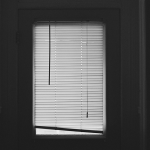Nobody is truly prepared for a disaster in the home. Dealing with one when it occurs can be a time-consuming, emotional, and difficult process. Whether you have been impacted by a recent disaster or not, learning about the best practices and strategies for post-disaster cleanup is the best thing you can do. It is critical for minimizing damage and ensuring your home’s long-term viability.
Let us have a look at some of the actions you should do if your home is affected by a disaster in the home:
Priority Must Be Given To Safety
The most crucial thing is your and your family’s safety, which means you must first ensure that your home is clear of toxins, structural damage, and anything else that could jeopardize your health and safety before beginning any cleanup process. If possible, get your home inspected by a property inspector or a government representative before reentering. You can begin the cleanup process once it has become clear of any threat. Wearing an article of protective clothing, however, is still recommended. When a natural disaster happens, especially when it concerns a flood, there can be a lot of debris. You should also make sure that all panels, fuses, and electrical switches are turned off.
Recruit Assistance
Following a natural disaster, you will see that everyone tries to pitch in and assist one another. That is just how people are. If you can, solicit the aid of individuals who have not been touched, as they will undoubtedly be dealing with their own problems. Whether it is from friends and family or from disaster restoration businesses, all assistance is welcome. Cleaning up after a disaster is a difficult chore, and it can take days, weeks, or even months to get things back to normal.
Sort Through Your Household Objects
If you have discovered an overabundance of water, you should deal with it right away. Water restoration may be needed, to make your home livable again. Some of your goods may be too damaged to repair, and carpets, rugs, and other floor coverings, as well as books, documents, and other non-washable objects, may need to be thrown. Remove any items that can be dried and cleaned, since waiting too long might cause them to decay or warp in size and shape. You should also have a disposal plan in place; after a natural catastrophe, most governments will provide free collection; all you have to do is set your discarded damaged objects on the curbside for pickup.
A Thorough Cleaning
After the initial evaluation, removal of damaged goods, and any necessary drying, it is time to give everything a thorough cleaning. In order to avoid any wet or future damage, pay particular attention to doors, windows, ceilings, and walls. When it comes to this, there are no short cuts, and it may be worthwhile to enlist the assistance of a professional service.
Cleaning up after a disaster can be hard and emotional, but it is vital if you want to salvage your house. Do you have any further suggestions to contribute in the comments section?








